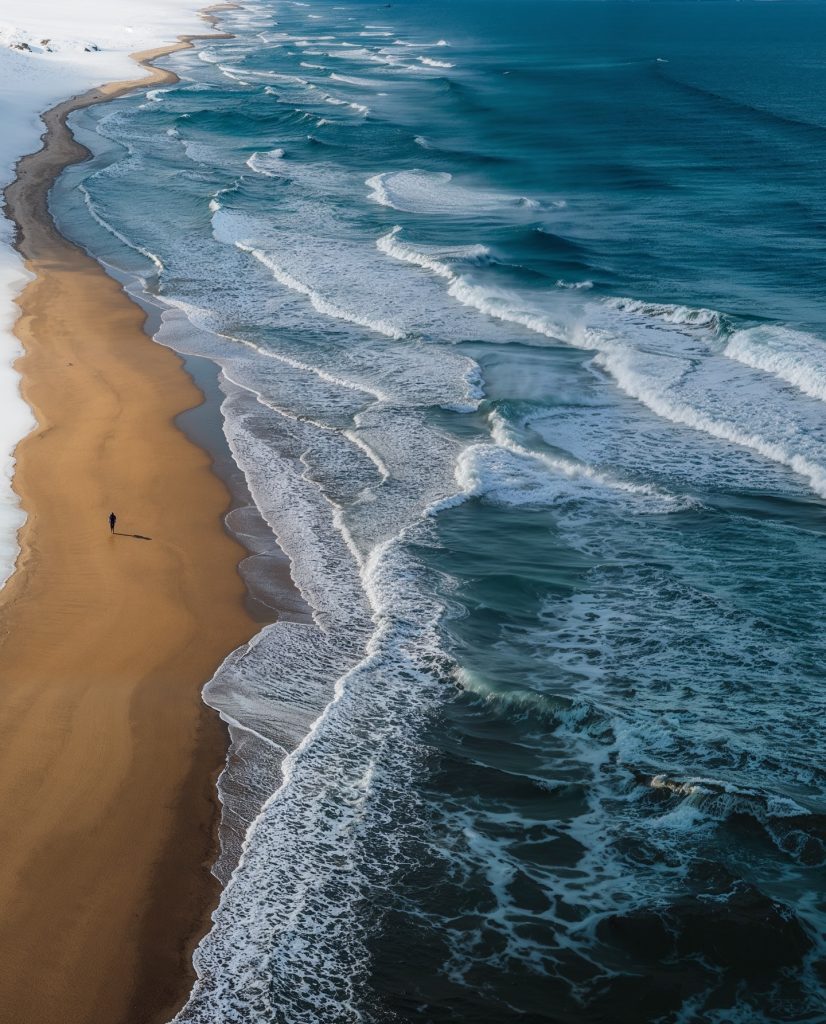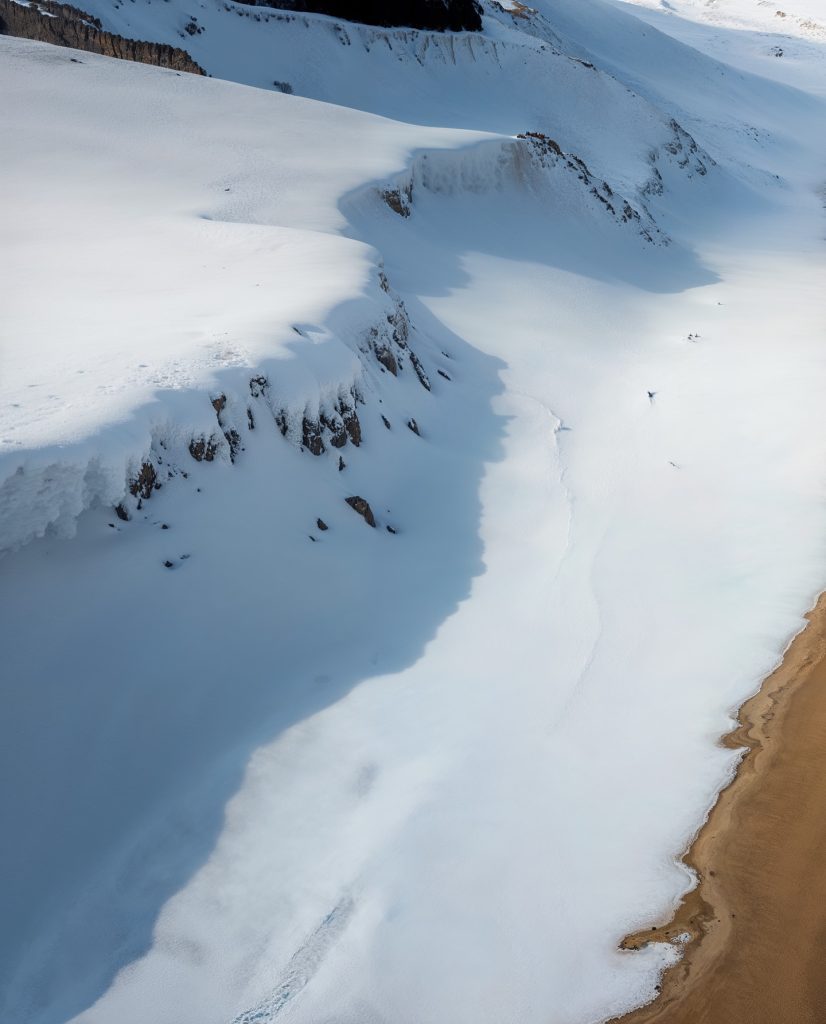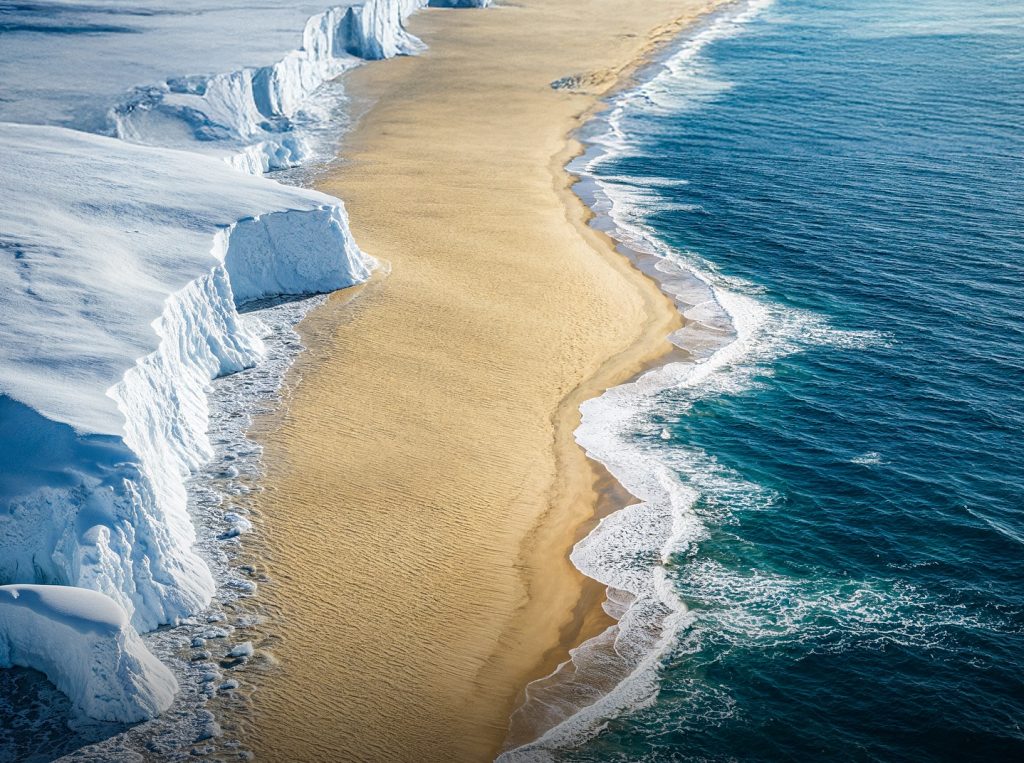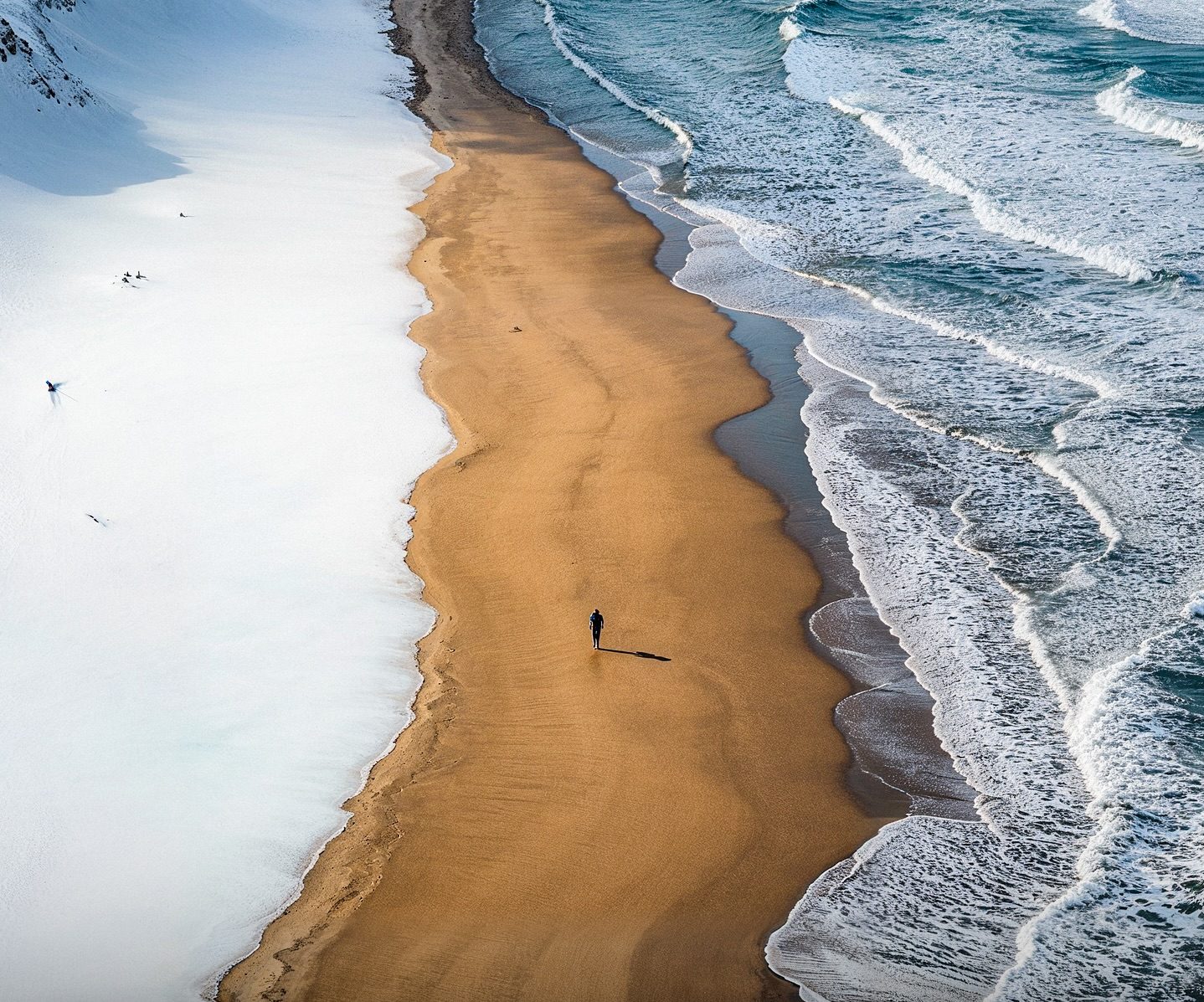In Hokkaido, Japan, There’s a Rare Beach Where Snow, Sand, and Sea Come Together in One Magical View
Every once in a while, nature creates a scene so unusual that it feels like a piece of art, painted not by human hands but by the elements themselves. One of those rare and almost surreal places lies in Hokkaido, Japan’s northernmost island, where the line between winter and the ocean blurs. Here, snow piles up on one side of the coast while waves crash against a sandy beach just a few steps away, creating a view that looks like two completely different worlds stitched together in one place.
Hokkaido is already famous for its deep winters. Heavy snowfalls arrive each year thanks to cold winds that blow across the Sea of Japan, carrying moisture from Siberia and releasing it as blankets of snow across the island. Ski resorts like Niseko and Furano have become legendary among winter sports enthusiasts because of this reliable powder. But what many people don’t realize is that the coastline of Hokkaido can also hold its own unique kind of winter magic. In some spots, the cold Siberian winds pile up snowbanks right against the coast, but the ocean currents prevent the water from freezing, keeping the sand exposed. The result is a rare meeting of opposites—white snow and golden beach lying side by side, while the sea continues to roll in as if nothing unusual is happening.

Standing on these shores is like being caught between two worlds. On one side, you feel the crunch of snow under your boots, and on the other, you hear the sound of waves breaking against sand. The view can feel almost contradictory—your eyes see winter and summer at the same time, yet both belong to the same landscape. Locals in Hokkaido are used to the island’s extremes, but for visitors, it often feels like stumbling into something out of a dream.
What makes this scene even more fascinating is how natural it is. There is no human design, no artificial border—just weather patterns and geography creating something unique. The Siberian winds are cold enough to bring massive snowfall inland, while ocean currents keep sections of the coastline relatively ice-free. The sand never completely disappears under the snow, and the sea keeps its rhythm, crashing endlessly against the beach. This balance of forces creates one of the simplest yet most breathtaking contrasts you can find in nature.

For travelers, Hokkaido offers many reasons to visit, from its famous ramen and seafood markets to hot springs that steam in the snow. But witnessing this meeting of snow and sea is an experience that sticks in memory. It’s not just about the beauty of the place—it’s about the feeling of seeing two opposing elements share the same space. Snow belongs to stillness, silence, and cold, while the sea belongs to movement, sound, and life. Seeing them side by side feels almost symbolic, a reminder that opposites can exist together without conflict.
Photographers are often drawn to this coastline for its striking visuals. The clean line between white snow and golden sand, with deep blue waves as the backdrop, makes for images that don’t even seem real at first glance. Tourists who discover this part of Hokkaido often share their photos online, leaving people around the world wondering if such a place could truly exist. But for the people of Japan’s north, it’s simply part of their winter landscape.

What makes Hokkaido special isn’t just the extremes of its climate—it’s the way those extremes come together to create harmony. The snow doesn’t fight the sand, and the sea doesn’t push away the winter. Instead, they exist side by side, quietly reminding us that nature doesn’t always fit into neat categories. Sometimes, it just creates something beautiful without explanation.
So if you ever find yourself in Hokkaido during the winter, take a moment to visit the coast. Stand there where snow and sand meet, let the cold air bite your face, and listen to the ocean’s endless rhythm. It’s a place where opposites meet in peace, and it might just leave you with a sense of wonder that stays long after you’ve left.

